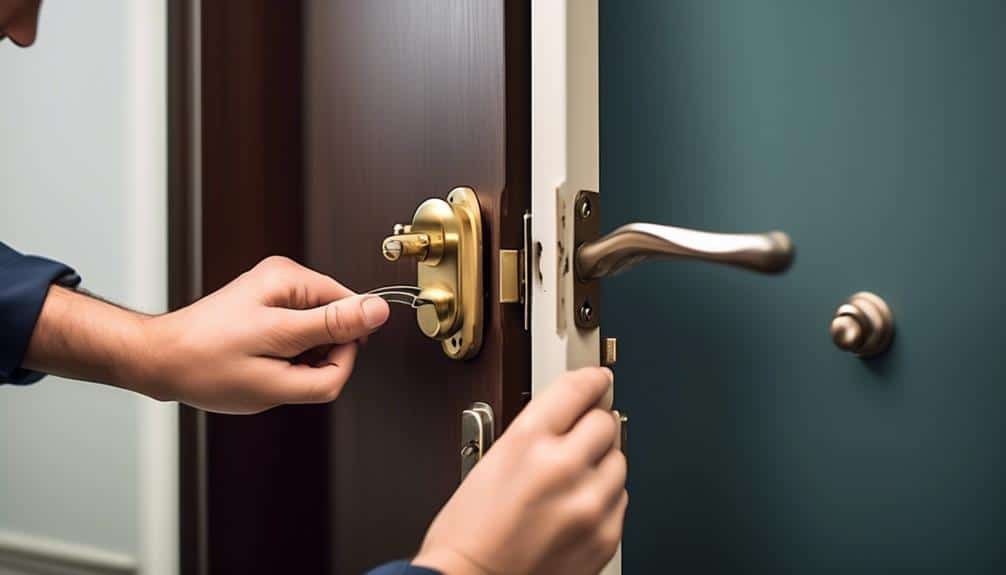When it comes to securing educational institutions, finding the right lock installation solutions is like finding the key to a well-guarded treasure chest. With so many options available, it can be overwhelming to determine which ones are the best fit.
That's where we come in. In this discussion, we will explore eight of the top lock installation solutions specifically tailored for educational institutions.
So, if you're ready to enhance the safety and security of your campus, join us as we uncover the secrets to keeping your educational institution locked tight.
Traditional Keyed Locks
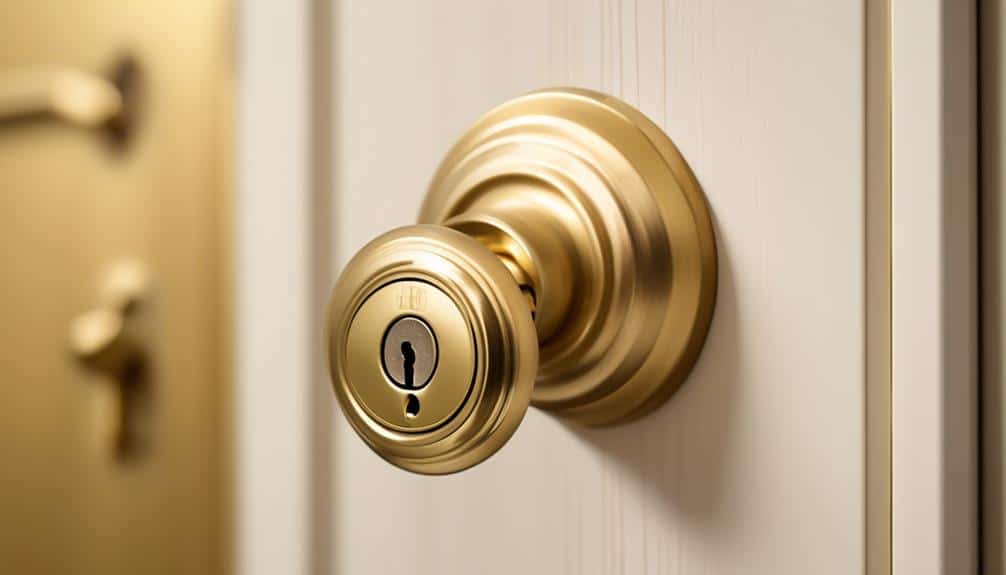
Traditionally, we've relied on keyed locks as a secure and reliable means of protecting educational institutions. Keyed locks have been the go-to option for securing doors, cabinets, and other areas within schools and universities.
However, as technology advances, keyless entry systems are gaining popularity due to their convenience and enhanced security features.
One of the main drawbacks of traditional keyed locks is the need for physical keys. Educational institutions have numerous areas that require access control, and managing a large number of keys can be challenging and time-consuming. Furthermore, lost or stolen keys can pose a significant security risk, as unauthorized individuals may gain access to restricted areas.
To address these challenges, many educational institutions are now opting for keyless entry systems. These systems use electronic credentials, such as swipe cards or key fobs, to grant access. By eliminating the need for physical keys, keyless entry systems offer greater convenience and streamline access control management.
Another advantage of keyless entry systems is the ability to implement master key systems. With a master key system, administrators can assign different levels of access to different individuals or groups. This allows for greater control and flexibility in managing access to various areas of the institution.
Electronic Keypad Locks
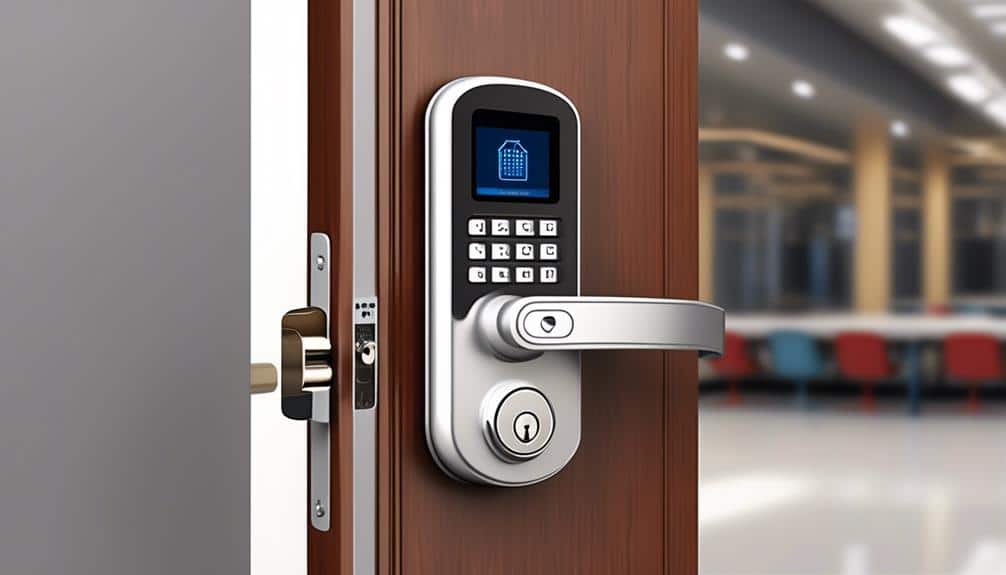
Electronic keypad locks offer a convenient and secure alternative to traditional keyed locks in educational institutions. These locks utilize a digital keypad to grant access to authorized individuals.
One of the key benefits of electronic keypad locks is their ability to provide enhanced security measures. With biometric access control, these locks can be programmed to recognize specific fingerprints, ensuring that only authorized individuals can gain entry. This eliminates the need for physical keys, which can be easily lost or duplicated.
Additionally, digital door locks offer the advantage of easy code management. Codes can be easily changed or revoked, providing a higher level of control over access to different areas within the institution. This is particularly useful in educational settings where multiple individuals require access to different rooms or buildings.
Electronic keypad locks also offer a user-friendly experience, as individuals only need to input their unique code to gain entry.
With their convenience, enhanced security features, and easy code management capabilities, electronic keypad locks are an excellent choice for educational institutions looking to upgrade their lock systems.
High-Security Cylinder Locks
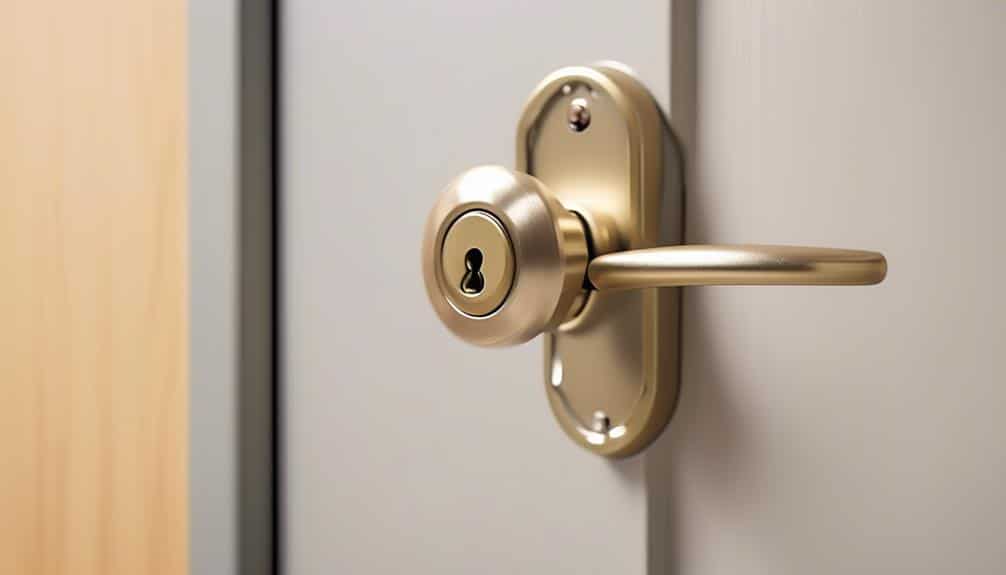
When it comes to ensuring the security of our educational institutions, high-security cylinder locks offer numerous benefits. These locks are designed with advanced features that make them resistant to tampering and picking, providing a higher level of protection.
Choosing the right lock is crucial, as it should meet the specific needs and requirements of the educational facility, taking into consideration factors such as durability, key control, and ease of installation.
Benefits of High-Security Locks
Installing high-security cylinder locks offers numerous benefits for educational institutions, enhancing the overall security and providing peace of mind for staff, students, and parents alike. Here are some key advantages of high-security locks:
- Increased resistance to forced entry: High-security cylinder locks are designed with advanced features that make them more difficult to pick, drill, or bump. This significantly reduces the risk of unauthorized access to school premises.
- Biometric lock benefits: Some high-security locks come with biometric technology, allowing access through fingerprints or other unique identifiers. This eliminates the need for traditional keys or access cards, enhancing convenience and minimizing the risk of lost or stolen keys.
Features of Cylinder Locks
After understanding the benefits of high-security locks for educational institutions, it's important to explore the features that make cylinder locks an effective choice for enhancing security.
One notable feature is the availability of different types of deadbolts. These deadbolts, such as single-cylinder, double-cylinder, and jimmy-proof deadbolts, provide varying degrees of protection against forced entry.
Additionally, cylinder locks offer the ability to integrate electronic locks, which further enhances security. Electronic locks provide benefits such as keyless entry, remote access control, and audit trails, allowing for easy management of access rights and monitoring of security events.
This combination of traditional deadbolts and electronic lock systems makes cylinder locks a versatile and effective choice for educational institutions, ensuring the safety and security of students, staff, and facilities.
Choosing the Right Lock
To ensure optimal security, it's crucial to carefully select the right high-security cylinder lock for educational institutions. When choosing the right lock, consider the following factors:
- Smart Lock Technology:
- Look for locks that offer smart features, such as remote access and control, to enhance security and convenience.
- Consider locks that can be integrated with existing security systems for seamless operation.
- Keyless Entry Systems:
- Opt for locks that offer keyless entry options, such as PIN codes or biometric authentication, to eliminate the need for physical keys.
- Choose locks that allow for easy management of access rights, enabling administrators to grant or revoke access as needed.
Biometric Lock Systems
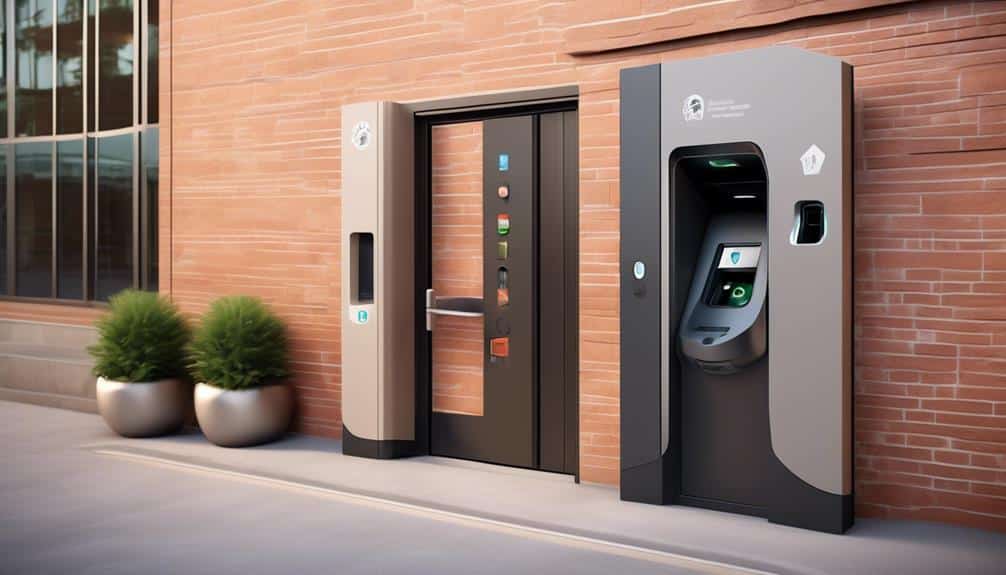
Biometric lock systems offer enhanced security measures for educational institutions. These systems utilize unique physical characteristics, such as fingerprints or iris scans, to grant access to authorized individuals.
Enhanced Security Measures
We can greatly enhance the security measures in educational institutions by implementing biometric lock systems. These advanced lock systems provide an additional layer of security by using unique physiological traits such as fingerprints or iris scans to grant access. Here are two key reasons why biometric lock systems are an effective solution:
- Improved Access Control: Biometric lock systems ensure that only authorized individuals can enter restricted areas. This eliminates the risk of unauthorized access and enhances overall campus security.
- Simplified Security Procedures: With biometric lock systems, there's no need for traditional keys or access cards, which can be lost or stolen. This eliminates the need for constant rekeying and card replacement, saving time and resources.
Access Control Integration
Implementing biometric lock systems for access control integration is a crucial step towards improving the overall security measures in educational institutions. These advanced technologies offer a more reliable and efficient way to manage access to various areas within the campus. However, integrating biometric lock systems into existing infrastructure can pose some challenges.
| Access Control Solutions | Integration Challenges |
|---|---|
| Biometric lock systems | Compatibility issues |
| System complexity | |
| Training and support |
Biometric lock systems provide a secure and convenient way to control access, as they rely on unique biological characteristics such as fingerprints or iris patterns. They offer a higher level of security compared to traditional keys or access cards, which can be lost or stolen. However, integrating these systems can be challenging due to compatibility issues with existing infrastructure, especially in older buildings. Additionally, the complexity of the system may require specialized training and ongoing support for maintenance and troubleshooting. Despite these challenges, the benefits of implementing biometric lock systems for access control integration outweigh the difficulties, as they provide enhanced security and peace of mind for educational institutions.
RFID Card Access Locks
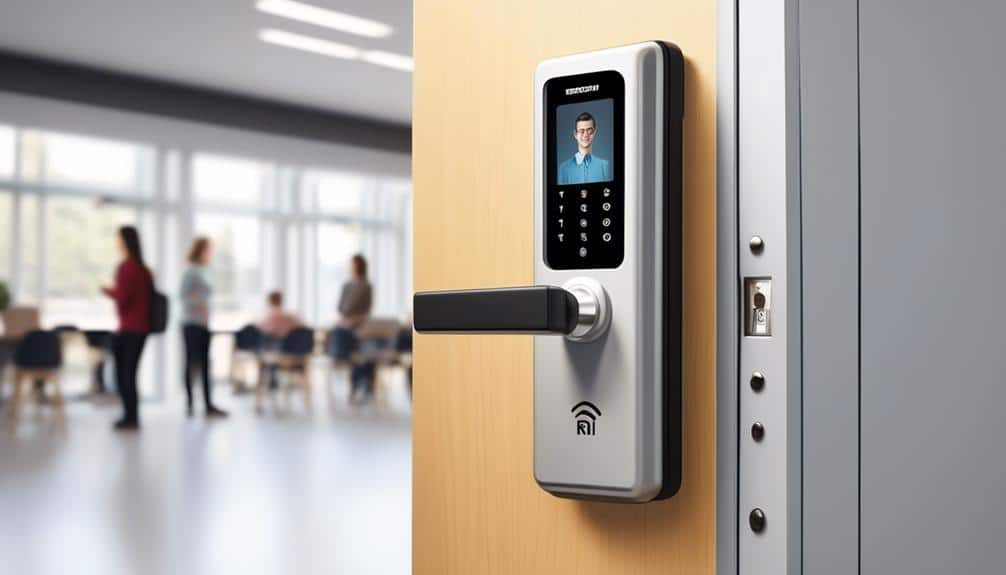
Using RFID card access locks is an efficient and secure way to control access to educational institutions. With the advancement in technology, biometric access systems and keyless entry options have become popular choices for educational institutions.
Here are some reasons why RFID card access locks are a preferred solution:
- Convenience and Efficiency:
- RFID card access locks provide a hassle-free entry system, eliminating the need for traditional keys or access codes.
- Students and staff can easily swipe their RFID cards to gain entry, saving time and reducing the chances of lost or forgotten keys.
- Enhanced Security:
- RFID card access locks offer a higher level of security compared to traditional lock systems.
- Each RFID card is unique, making it difficult to duplicate or tamper with.
- In case of a lost or stolen card, access can be immediately revoked, ensuring the safety of the institution and its occupants.
- Integration Capabilities:
- RFID card access locks can be easily integrated with existing security systems, such as CCTV cameras and alarm systems.
- This integration allows for better monitoring and control of access within the educational institution.
Wireless Smart Locks
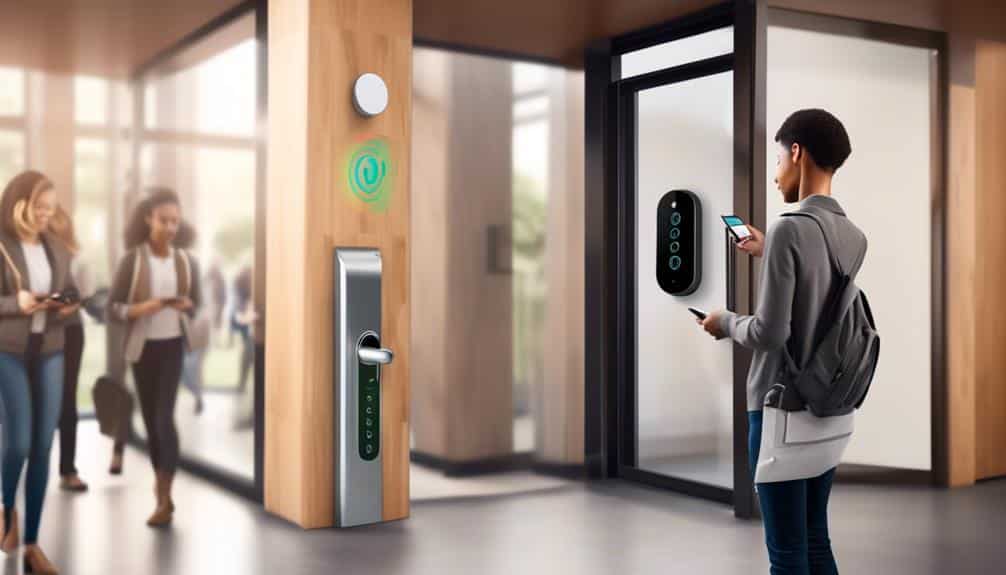
Wireless smart locks are an innovative and convenient solution for controlling access in educational institutions. With the advancement of wireless lock technology, these locks offer numerous benefits that make them an excellent choice for securing school premises.
One of the key benefits of wireless smart locks is their ease of installation. Unlike traditional locks that require complex wiring, wireless locks can be easily installed without the need for extensive construction work. This not only saves time but also reduces the disruption to the daily operations of the institution.
Another advantage of wireless smart locks is their flexibility. These locks can be easily integrated with existing security systems, such as CCTV cameras and alarm systems, providing a comprehensive security solution. Additionally, wireless smart locks can be remotely controlled and monitored, allowing administrators to grant or revoke access privileges in real-time.
Moreover, wireless smart locks offer enhanced security features. They use encrypted communication protocols to ensure that unauthorized access is prevented. Additionally, these locks can be programmed to send instant notifications to administrators whenever a lock is tampered with or an unauthorized entry attempt is made.
Panic Bar Exit Devices
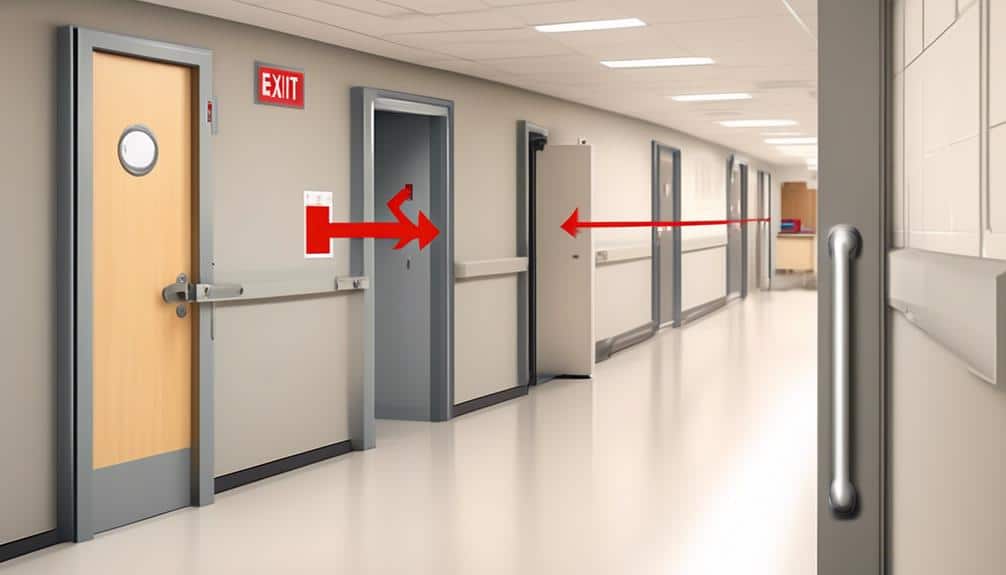
After exploring the benefits of wireless smart locks, it's important to now shift our focus to panic bar exit devices, which play a crucial role in ensuring the safety and security of educational institutions.
Panic bar exit devices, also known as crash bars or push bars, are essential components of access control systems in schools and universities. Here are two key reasons why panic bar exit devices are vital for educational institutions:
- Emergency exits: Panic bar exit devices are designed to provide quick and easy access to emergency exits during critical situations, such as fires or lockdowns. With just a simple push, the bar activates the latch mechanism, allowing students, staff, and visitors to exit the building swiftly and safely.
- Compliance with safety regulations: Educational institutions are required to comply with various safety regulations, and panic bar exit devices are a crucial component of these compliance measures. They ensure that all exits are easily accessible and meet the necessary standards set by local fire and building codes.
Combination Locks
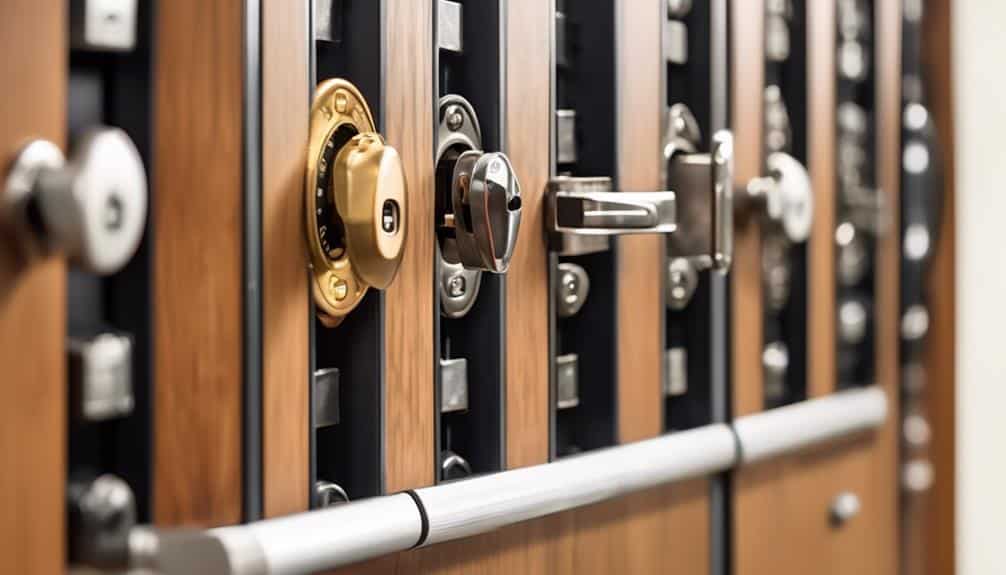
Combination locks are a popular choice for securing doors and cabinets in educational institutions. They offer a convenient and reliable way to restrict access to certain areas. Let's take a closer look at the advantages and disadvantages of using combination locks in schools.
| Advantages | Disadvantages |
|---|---|
| Convenient and easy to use | Combination can be forgotten or shared |
| No need for keys or cards | Limited number of possible combinations |
| Durable and long-lasting | Time-consuming to change the combination |
| Can be used in various settings | Not suitable for high-security areas |
One of the main advantages of combination locks is their convenience and ease of use. Unlike keys or cards, which can be lost or forgotten, combination locks require the user to enter a specific code to gain access. This eliminates the need for carrying around additional items.
Additionally, combination locks are durable and long-lasting, making them suitable for high-traffic areas such as schools. They can withstand frequent use and are less prone to damage compared to other types of locks.
However, combination locks also have their disadvantages. One of the main drawbacks is the possibility of the combination being forgotten or shared. If a student or staff member forgets the code or shares it with unauthorized individuals, it jeopardizes the security of the area.
Another disadvantage is the limited number of possible combinations. This makes them more susceptible to brute-force attacks, where an intruder tries different combinations until the lock is opened.
Furthermore, changing the combination can be time-consuming, especially if multiple locks need to be reprogrammed. This can cause inconvenience and delays in properly securing the premises.
Lastly, combination locks might not be suitable for high-security areas that require advanced access control systems. They are more commonly used in low to medium-security applications within educational institutions.
Frequently Asked Questions
What Are the Key Benefits of Using Electronic Keypad Locks in Educational Institutions?
Using electronic keypad locks in educational institutions has numerous benefits.
These locks enhance campus security by providing a keyless entry system, eliminating the need for physical keys that can be lost or stolen.
They also allow for easy access control, as administrators can easily grant or revoke access to specific individuals.
Additionally, electronic keypad locks offer a higher level of convenience, as students and staff can quickly enter buildings using a personalized code.
How Do High-Security Cylinder Locks Provide Additional Protection Compared to Traditional Keyed Locks?
High-security cylinder locks provide additional protection compared to traditional keyed locks in several ways. They're designed with advanced features such as pick-resistant mechanisms and anti-drill plates, making them more resistant to forced entry.
These locks also offer key control, meaning that only authorized individuals can duplicate keys.
In comparison to traditional locks, high-security cylinder locks offer enhanced security and peace of mind for educational institutions.
Are Biometric Lock Systems Suitable for All Types of Educational Institutions?
Biometric lock systems, huh? Well, let's dive in!
When it comes to implementing these fancy systems in educational institutions, there are pros and cons to consider.
On the upside, biometric locks offer enhanced security through unique identification methods like fingerprints or iris scans.
However, there are a few factors to keep in mind. Biometric systems can be expensive, require regular maintenance, and may not be suitable for all types of institutions.
What Are the Advantages of Using RFID Card Access Locks Over Other Types of Lock Systems?
Using RFID card access locks in educational institutions offers several advantages over traditional key locks.
Firstly, they provide enhanced security by allowing access only to authorized individuals with the RFID card.
Secondly, they're convenient as there's no need to carry multiple keys.
Additionally, RFID card access locks can be easily programmed and reprogrammed, providing flexibility in managing access.
On the other hand, traditional key locks have the disadvantage of keys being lost or stolen, compromising security.
Can Wireless Smart Locks Be Easily Integrated With Existing Security Systems in Educational Institutions?
Integrating wireless smart locks with existing security systems in educational institutions can be a breeze! While there may be some integration challenges, such as compatibility issues, the benefits outweigh the difficulties.
These locks offer convenient access control and enhanced security. Plus, they can be cost-effective in the long run, as they eliminate the need for physical keys and reduce the risk of lost or stolen cards.

